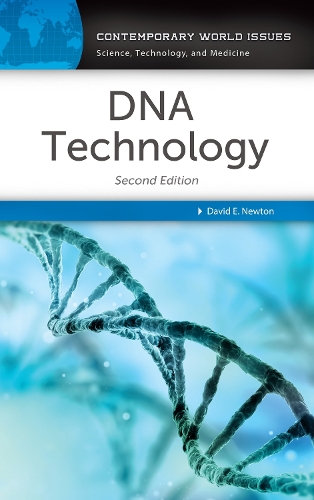
DNA Technology: A Reference Handbook
(Hardback, 2nd edition)
Publishing Details
DNA Technology: A Reference Handbook
By (Author) David E. Newton
Bloomsbury Publishing PLC
ABC-CLIO
12th December 2016
2nd edition
United States
Classifications
Tertiary Education
Non Fiction
576.5
Physical Properties
Hardback
392
Width 228mm, Height 150mm, Spine 22mm
580g
Description
This accessibly written book introduces readers to DNAone of the most important technologies for the manipulation of all forms of life, from simple bacteria to plants and animals. It also addresses the most important social, ethical, political, economic, and other issues raised by this form of technology. The great strides made in our understanding of the structure and function of DNA in recent decades have led to applying this invaluable knowledge to use in serving humanity. For example, recent discoveries in the field of genetic editing have created the potential for the creation of life forms de novo, a possibility that results in profound ethical issues for the human race that are just beginning to be discussed. What other positiveand potentially negativedevelopments are coming our way with continuing advancements in DNA research DNA Technology: A Reference Handbook provides an up-to-date historical overview and general technical background to the topic as well as a broad introduction to current issues related to the development of DNA technology, such as genetically modified organisms, the use of DNA technology in the forensic sciences, and genetic testing and genetic therapy. Written by David E. Newton, an author and former teacher who has dedicated a lifetime to authoring educational texts on science and technology, this book examines the history of DNA technology from its discovery in the 1950s to the present day and covers recent advances, such as new methods for gene editing, including CRISP-Cas9 technology. Readers need to have little or no background knowledge of the technology of genetic engineering to improve their understanding of DNA-based technologies and how DNA research influences many current issues and debates in agriculture, food science, forensics, public health, and other fields. The single-volume work is particularly well-suited to students and young adults because of the range of references included that serve further study, such as a glossary of terms, a chronology, and an extensive annotated bibliography.
Reviews
This edition maintains the organization of the original, with sections for background and history; problems, issues, and solutions; profiles of individuals and organizations; data and documents; an extensive annotated bibliography; and a chronology. It will be most helpful to students needing a solid scientific background and looking for multidisciplinary information on various DNA technologies and related controversies. For libraries that own the previous edition and support programs in biology, biomedical science, or forensic science, purchase of this updated edition is necessary because the technology is advancing so quickly. Summing Up: Recommended. High school through undergraduate students; general readers. * Choice *
Author Bio
David E. Newton, EdD, has been a freelance writer of nonfiction books and ancillary materials for young adults for nearly 55 years. He has published more than 400 textbooks, encyclopedias, resource books, research manuals, and trade books, as well as lab manuals, problems books, and other educational material.
